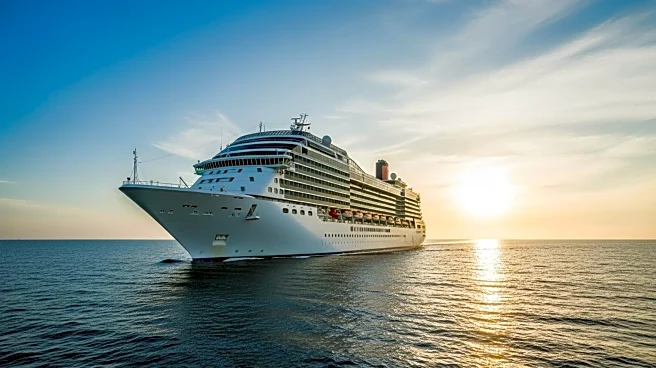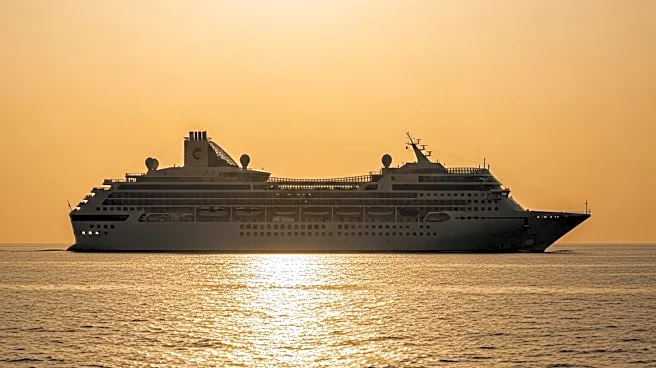What's Happening?
The cruise industry is experiencing a resurgence, with 34.6 million travelers opting for cruise vacations in 2024, marking a 16% increase from pre-COVID-19 levels. The average age of cruise passengers has dropped to 46, with many first-time cruisers. Despite challenges such as the COVID-19 pandemic, rising energy costs, and climate activism, cruise operators have adapted by investing in energy-efficient vessels and launching targeted marketing campaigns. The industry is seeing near-full capacity, rising stock prices, and significant investments in new ships, with 11 new ships valued at $10 billion expected to join global fleets in 2025.
Why It's Important?
The cruise industry's recovery is significant for the global tourism sector, as it demonstrates resilience and adaptability in the face of economic and environmental challenges. The industry's ability to attract a younger demographic and first-time cruisers indicates a successful rebranding effort. This resurgence also has economic implications, as cruise companies generate substantial revenue and contribute to local economies through tourism. The industry's focus on sustainability and personalized experiences reflects broader trends in consumer preferences and environmental responsibility.
What's Next?
The cruise industry is poised for continued growth, with projections of 37.7 million cruise passengers in 2025. The sector aims to increase its share of global tourism to 5% by 2028. However, challenges remain, including geopolitical tensions affecting cruise routes and environmental concerns leading to port access restrictions in some European cities. Cruise operators will need to balance expansion with sustainability efforts to maintain their positive trajectory.
Beyond the Headlines
The cruise industry's transformation highlights the importance of innovation and strategic marketing in overcoming negative perceptions. The shift towards eco-friendly practices and diverse offerings reflects a broader cultural shift towards sustainable and inclusive travel experiences. The industry's success in attracting younger travelers underscores the changing dynamics of the tourism market, where convenience and value are increasingly prioritized.










